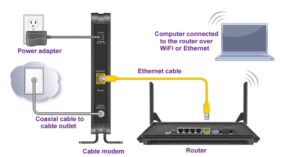

The command netstat -nr on your PC will reveal both the static routes it learned from it's configuration files and the dynamic routes it learned by ICMP redirects or by listening to routing protocol broadcasts/multicasts. PC will add this to it's routing table, hence R1 won't show in a subsequent traceroute. If router R1 is PC's default gateway, when PC first tries to contact Google, PC will send data to R1 (as PC knows Google's IP-address is not in PC's subnet), However R1 will tell the PC that a more appropriate route to 64.20.60.99 is via router R2. If your LAN has multiple routers, the router designated as a default gateway can notify your computer, using an ICMP redirect or other mechanism, of a more appropriate route for a given destination. The term " default gateway" is used to mean the router on your LAN which has the responsibility of being the first point of contact for traffic to computers outside the LAN. This is because the entire network is set up as the passthrough to a DMZ node, and the untrusted Internet will be connected to a DMZ network.A gateway and a router are essentially the same.
#Modem vs router vsgateway plus
Some gateway vendors like 2wire call IP passthrough as the DMZ Plus mode. The traffic will still pass-though the gateway, and the ISP-provided public IP address will be assigned to the customer's router. However, in IP pass-through mode the signal is terminated (bridge mode signal is not terminated) at the gateway and allows the ISP to connect to the gateway with its own IP. IP pass-through works essentially the same as the bridged mode where customer can use their own router behind the ISP-provided gateway. Some ISPs choose to configure this themselves, and you may have to contact your ISP to make this change.

This is one of the primary reasons why you may want to place the gateway in bridge mode to avoid double NAT issue.ĭepending on the model of the gateway, you may be able to enable bridge mode yourself. A double NAT occurs when you have two devices requiring to be in the same LAN, but belonging to two different subnetwork due to having two routers. Also, because you're disabling NAT on your gateway, you won't have a double NAT issue with the home router you may have connected to your gateway. However, you may still use the DHCP server functionality provided in most routers. The network before the bridged gateway and after the gateway is in the same network.Īs you're not filtering any traffic, you cannot use NAT feature in a bridge mode.

Since you're making the gateway a layer 2 device, you cannot assign a static IP address to your gateway in bridge mode. By enabling the bridge mode, we're essentially disabling the router function (layer 3) and make the gateway function as a modem (layer 2). To accomplish this, an ISP may configure the gateway to a "bridge" mode, and pass the traffic through the gateway without performing the routing functions.

So, what is the bridge mode, and what is the pass-through mode?īefore we discuss bridge vs pass-through mode, we need to understand what gateway is. Depending on how you want to configure your network, you may configure the gateway to bridge over passthrough. When you set up a gateway at home, you may opt to enable a bridge or pass-through mode.


 0 kommentar(er)
0 kommentar(er)
